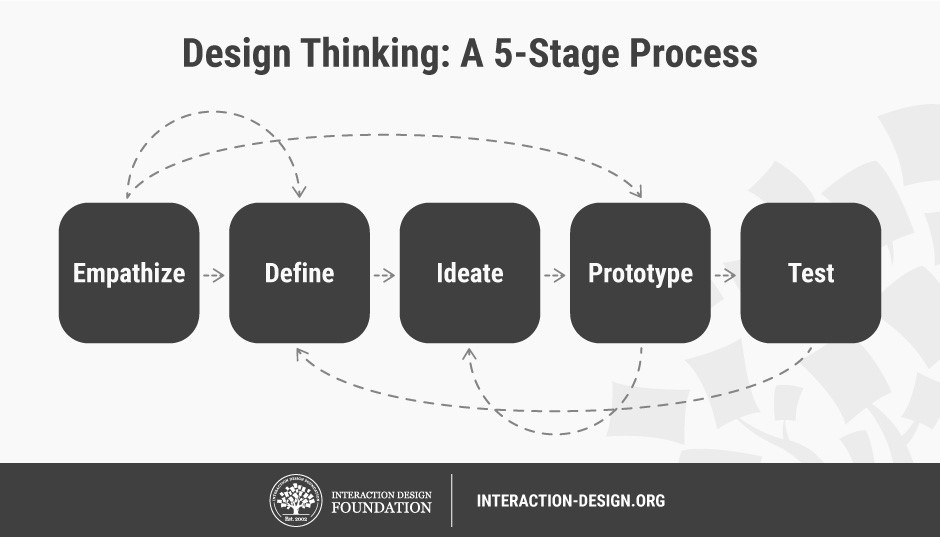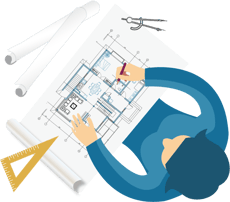What is Design Thinking?

The Five Stages of Design Thinking
Stanford’s Hasso-Plattner Institute of Design describes Design Thinking as a five-stage process. These stages are not always sequential; nor do they require design teams to approach them thus. Designers will find the stages often occur in parallel and see repeated use on an iterative basis. Consequently, designers should consider these not a “recipe”, but different modes that contribute to a project.

1. Empathize
The first stage of the Design Thinking process demands gaining an empathic understanding of the problem you’re trying to solve, typically through some form of user research. Empathy is crucial because it allows you to set aside your own assumptions about the world in order to gain insight into users and their needs. This stage involves entering the realm of the users and, as far as possible, “becoming” them so as to begin work on custom-designing a solution.

2. Define
During the Define stage of Design Thinking, you put together the information you have created and gathered during the Empathize stage. You analyze your observations and synthesize them in order to define the core problems you and your team have identified so far. This is where you ensure that what you are addressing sits in sharp relief before you, its properties known in full.

3. Ideate
The process’s third stage finds you ready to start generating ideas. With the knowledge you have gathered in the first two phases, you can start to “think outside the box” to identify new solutions to the problem statement you’ve created, and you can start to look for alternative ways of viewing the problem.

4. Prototype
In the Prototype phase of Design Thinking, your design team produce a number of inexpensive, scaled-down versions of the product or specific features found within the product so you can investigate the problem solutions generated in the previous stage.

5. Test
In the Test phase of Design Thinking, you rigorously test the completed product using the best solutions identified during the prototyping phase. This is the final stage; however, in an iterative process, the results generated during the testing phase are what you will often use to redefine one or more problems.

In his 2009 TED talk, Design Thinking pioneer Tim Brown discusses Design Thinking’s value in solving very complex challenges.
Check the original article here: https://www.interaction-design.org/literature/topics/design-thinking
Do you want to learn more?
Have fun learning with our platform Engage!K12 and the Engineering Design Thinking with Cubelets lesson we have for you! Create a Free account and enjoy more lessons.

This is a new educational channel called Smart Friday!
Every Friday we will share with you an informational piece about a topic we care about. You can share it in your classroom. Have fun learning!



